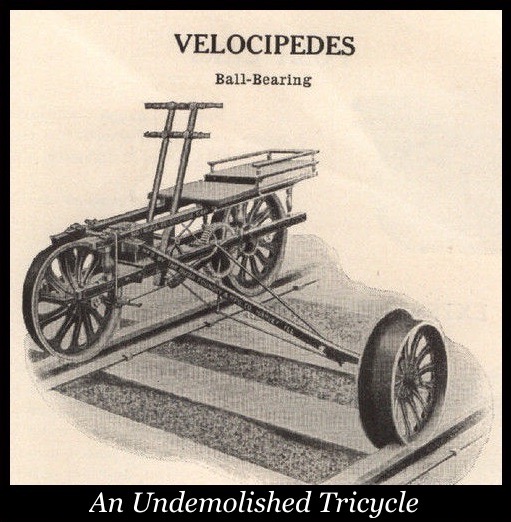While roaming with his father on summer prospecting expeditions, William Frank Lovewell had grown to appreciate the rugged, wide-open spaces of Wyoming. He even may have felt an initial burst of enthusiasm when in the fall of 1906 his job with the railroad took him to the northern reaches of the state, where he was to serve as a section foreman in the Bighorn Basin.
Between 1900 and 1905, the Bighorn was one of the last places in the Wild West to be settled, mostly by Mormon immigrants looking for large, unclaimed tracts of land. Maps of the region are dotten with names such as Bridger, Colter, and Cody, reminding newcomers of the legendary figures who had once pitted themselves against this untamed and inhospitable spot. By 1906 agriculture started to gain a foothold, once the Stinking River had been harnessed for irrigation (and given the more palatable name Shoshone River by the state legislature). While civilization was belatedly coming to the basin, Frank Lovewell might not have counted on the unremitting loneliness of the place.

It took two weeks for a small but alarming blurb about Frank’s railroad accident in mid-February to appear in the Republic County press:
News has reached here that Frank Lovewell met with serious injuries at Cowley, Wyoming, recently. He is section foreman there and was struck by a train. He was taken 200 miles to a hospital for treatment.
One week later his friends back home must have been reassured to learn that Frank’s most serious injury was a leg that was broken in two places. None of the press clippings from his hometown had anything to match the juicy details contained in the account published at Basin, Wyoming.
RUN DOWN BY THE TRAIN
Section foreman at Cowley Struck by Thursday Afternoon’s Passenger Train.
Word came to Basin on Thursday afternoon train that No. 311 due into Basin at 5:05 had run down a man near Lovell, cutting off both legs and one arm, injuring him so badly that it was only a question of a short time until death would ensue.
An investigation into the matter, however, proved the story to be exaggerated, and the facts to be about as follows:
Foreman Lovewell, of the Cowley section, had been over the road on his tri-cycle and was returning home. Some place on the trip he had gathered on a large size load of booze, and when about half way between the Lovell bridge and the town of Lovell, went to sleep sitting on his trycicle, the trycicle standing on the track. The engineer failed to see the unfortunate man until too late to stop his train before striking him. He was knocked from the track, one leg broken, and otherwise badly injured, but it is not thought at this time that his injuries will prove fatal.
The train was stopped, the injured man put on board and taken to Lovell where his wounds were attended to.
No blame is attached to the train crew for the accident.
Amazingly, William Frank Lovewell was not the only William Lovewell to be clobbered by a train early in the 20th century. In late June and early July of 1904 newspapers across Kansas spread the amazing story of William J. Lovewell’s ordeal. Although there is no indication that alcohol was involved in this mishap, it’s hard to imagine that it wasn’t.
STRUCK WHILE ASLEEP
Man Hurled From Bridge Into River by Engine.
A stranger, giving his name as W. J. Lovewell, and his home as Arkansas City, fell asleep on the Missouri Pacific bridge, three miles east of Salina, and was struck by a switch engine and hurled into the river. His left arm was broken and he was otherwise injured. He managed to swim to the shore and the train crew picked him up and brought him to town, where his injuries were attended to.
He is now in the hospital, but may lose the arm.
Lovewell said he was traveling east when he became tired and sat down on the track and fell asleep. He did not hear the engine until it struck him.
A few days later, with both arms apparently still attached, William Jonathan Lovewell, now a celebrity whose very appearance on the streets of town was deemed newsworthy, arrived in Lawrence to visit his cousin, a local businessman named J. W. Shaw.
The two men were indeed cousins, being a pair of otherwise obscure grandsons of Moody Bedel Lovewell. William Jonathan Lovewell was the son of Franklin Lovewell, the boy from William B. Lovewell's prior marriage who was banished from the family farm when he was only eight years old, because he couldn’t get along with his shrewish stepmother Matilda. Mr. Shaw of Lawrence was apparently the son of William B. Lovewell’s daughter Elizabeth, who had married a Kansan known to family historians only as J. W. Shaw. Since Elizabeth’s husband is supposed to have died in the 1870’s, the J. W. Shaw being visited by a cousin in 1904 must have been Elizabeth’s son.
It’s a side of the family some us know very little about, and would know even less, if a train hadn’t bumped into one of them in the summer of 1904.